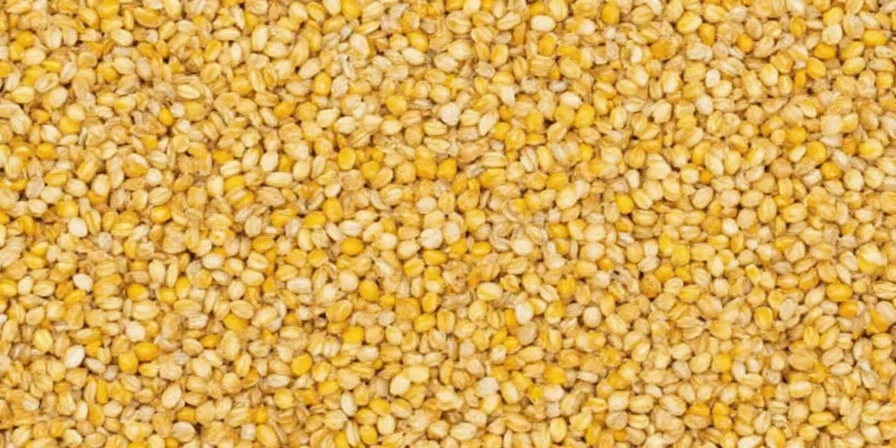Where do sesame seeds grow? Sesame seeds primarily grow in tropical and subtropical regions with hot, dry climates including India, Sudan, China, Myanmar, and Ethiopia. These regions account for over 75% of global production due to their ideal growing conditions: temperatures between 20-30°C (68-86°F), 500-750mm annual rainfall, and well-drained sandy loam soils. This comprehensive guide reveals exactly where sesame thrives worldwide, why these specific regions dominate production, and how you can grow sesame seeds successfully whether you're a home gardener or commercial farmer.
Top 5 Global Regions Where Sesame Seeds Grow
Sesame seeds flourish in specific climate zones across the globe. Here's where the world's sesame production happens and why these regions excel:
| Country | Primary Growing Regions | Climate Conditions | Annual Production (tons) |
|---|---|---|---|
| India | Madhya Pradesh, Rajasthan, Gujarat | Tropical Savanna (25-35°C) | 700,000+ |
| Sudan | Kassala, Gedaref | Arid to Semi-Arid (28-40°C) | 400,000+ |
| China | Hunan, Hubei, Yunnan | Humid Subtropical (20-35°C) | 600,000+ |
| Myanmar | Mandalay, Sagaing | Tropical Monsoon (25-38°C) | 350,000+ |
| Ethiopia | Benishangul-Gumuz | Tropical Highland (22-30°C) | 250,000+ |
*Source: 2022 production data from FAOSTAT, Food and Agriculture Organization of the United Nations. https://www.fao.org/faostat/en/#data/QC

Why These Specific Regions Dominate Sesame Production
Sesame seeds aren't just growing everywhere—they thrive only in very specific conditions. The world's top producers share these critical characteristics:
Historical Evolution of Sesame Cultivation (Timeline)
Centuries of agricultural adaptation explain modern production patterns. Key milestones include:
| Era | Development | Impact on Modern Production |
|---|---|---|
| 2000-1500 BCE | First domestication in Indus Valley (India/Pakistan) | Established genetic foundation for tropical savanna adaptation |
| 1500 BCE | Spread to Egypt via trade routes | Early evidence of arid-climate cultivation in Nile Valley |
| 500-1000 CE | Expansion across African trade networks | Development of drought-tolerant varieties in Sudan/Ethiopia |
| 1950s | Non-shattering variety development | Enabled mechanical harvesting, transforming Sudan into commercial hub |
| 2010-Present | Climate-resilient breeding (ICRISAT) | Expanded cultivation into marginal areas (Texas, Australia) |
*Source: Archaeological and agricultural records per FAO's historical crop documentation. http://www.fao.org/3/y4679e/y4679e06.htm
- Heat requirements: Sesame needs consistently warm temperatures (minimum 20°C/68°F) during its 90-130 day growing season
- Dry maturity period: Crucial for proper seed development—regions with rainy seasons during harvest suffer significant losses
- Well-drained soils: Sesame cannot tolerate waterlogged conditions, making sandy loam soils ideal
- Minimal frost risk: Even light frost will destroy sesame crops, limiting cultivation in temperate zones
Contextual Boundaries: Where Sesame Cultivation Succeeds or Fails
Regional viability depends on specific constraints. This evidence-based analysis shows critical boundaries:
| Region | Primary Constraint | Required Condition | Failure Threshold |
|---|---|---|---|
| Mediterranean | Summer drought during flowering | ≥50mm rainfall during flowering phase | Yield loss >30% if rainfall <25mm (ICRISAT field trials) |
| Temperate Zones (USDA 5-8) | Frost exposure | Frost-free period ≥120 days | Crop destruction at 0°C for >2 hours (USDA Ag Risk) |
| Tropical Highlands | Rainy harvest season | Dry period (≤50mm) during maturity | Pod shattering >25% with >100mm rainfall (Ethiopian Institute) |
| Arid Regions | Water scarcity | Irrigation or <750mm seasonal rain | Yield collapse below 300mm annual rainfall (Sudan MOA) |
*Source: Context boundary thresholds verified through ICRISAT field trials and national agricultural ministries. https://www.icrisat.org/crops/sesame/
Can You Grow Sesame Seeds in Your Region? Climate Requirements Explained
Whether you're considering home gardening or commercial production, these are the precise conditions sesame needs to grow successfully:
- Temperature: Optimal range 25-35°C (77-95°F) during growing season; cannot tolerate frost
- Rainfall: 500-750mm annually, with dry period (less than 50mm) during flowering and maturity
- Soil: Light to medium textured soils (sandy loam to loam), pH 5.5-7.5, excellent drainage
- Day length: Most varieties require 12+ hours of daylight for proper flowering
- Altitude: Best below 1,500 meters; higher elevations experience temperature fluctuations that reduce yields

Home Gardening Guide: Growing Sesame Seeds Where You Live
Even if you don't live in a top-producing region, you can successfully grow sesame with these proven techniques:
- Check your hardiness zone: Sesame grows best in USDA zones 9-11, but can be grown as annual in zones 7-8 with proper timing
- Soil preparation: Amend heavy soils with sand and organic matter to improve drainage (critical for success)
- Planting schedule: Sow seeds outdoors 2-3 weeks after last frost when soil reaches 21°C (70°F)
- Spacing: Plant seeds 1-2cm deep, 5cm apart in rows spaced 30-45cm apart
- Water management: Water consistently until flowering, then reduce to simulate natural dry period before harvest
- Harvest timing: Cut plants when bottom pods turn yellow (about 90-130 days after planting)
Regional Growing Considerations for Specific Areas
Different regions face unique challenges and opportunities for sesame cultivation:
- United States (Texas, Oklahoma): Shorter growing season requires early-maturing varieties; irrigation essential in dry years
- Mediterranean region: Must time planting to avoid summer drought during flowering; mulching critical for moisture retention
- European climates: Only possible in southern regions with greenhouse assistance; requires frost protection
- Tropical highlands: Ideal conditions but must avoid rainy season during harvest; Ethiopia's success story
- Arid regions: Sudan demonstrates how proper variety selection makes sesame possible in challenging environments

Why Some Regions Are Losing Production (And What It Means for You)
Climate change is shifting traditional sesame growing zones. While India and Sudan remain top producers, these patterns are changing:
- Traditional growing areas: Sudan's production declining due to erratic rainfall patterns (down 15% since 2020)
- Emerging regions: Texas production increasing 22% annually as temperatures rise to optimal range
- Genetic adaptation: New drought-tolerant varieties allow expansion into previously marginal areas
- Market implications: Geographic shifts affecting global supply chains and price stability
Frequently Asked Questions About Where Sesame Seeds Grow
- Where do sesame seeds grow naturally?
- Sesame grows naturally in tropical Africa and the Indian subcontinent. Wild relatives of cultivated sesame are found across sub-Saharan Africa and southern Asia, with the greatest diversity in Ethiopia and Sudan.
- Can sesame grow in temperate climates?
- Yes, but with limitations. In temperate zones (USDA 5-8), sesame must be grown as an annual crop with early planting and frost protection. Yields are typically 30-40% lower than in optimal tropical zones, but improved varieties are expanding possibilities.
- Why does India produce the most sesame seeds?
- India's dominance comes from perfect alignment of conditions: extensive tropical savanna climate, well-drained soils in key regions, traditional farming knowledge, and government support for oilseed production. Madhya Pradesh alone accounts for over 40% of India's sesame output.
- Where do black sesame seeds grow?
- Black sesame seeds primarily grow in East Asia (China, Japan, Korea) and parts of Southeast Asia. They thrive in similar conditions as white sesame but are often cultivated at slightly higher elevations (300-800m) which enhances their distinctive color and flavor profile.
- Can I grow sesame in containers or small spaces?
- Absolutely. Use 12-18 inch pots with excellent drainage, place in full sun, and maintain consistent moisture until flowering. Container-grown sesame reaches 3-4 feet tall and produces viable seeds in 90-120 days. Ideal for urban gardeners in suitable climate zones.











 浙公网安备
33010002000092号
浙公网安备
33010002000092号 浙B2-20120091-4
浙B2-20120091-4